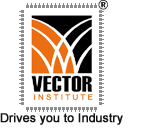C/C++ WITH DATA STRUCTURES free videos and free material uploaded by Vector India Pvt Ltd Training Institute staff .
C Basics
History of C
Characteristics of C
C Program Structure
Variables
Defining Global Variables
Printing Out and Inputting Variables
Constants
Arithmetic Operations
Comparison Operations
Logical Operators
Order of Precedence
Conditionals
Conditionals
The if statement
The? Operator
The switch Statement
Looping and Iteration
The for statement
The while statement
The do-while statement
Break and continue
Arrays and Strings
Defining, initializing and using arrays
Single and Multi-dimensional Arrays
Arrays of Characters and Strings
Arrays and pointers
Strings
Functions
Role of Functions
Passing arguments to functions
Returning values from functions
Recursive functions
Call back functions
Implications on Stack
Pass by value / reference
Passing Arrays to functions
String Handling :
Basic String handling functions
String Searching
Character Conversions and testing :
Memory Operations:
Structures and Unions
Structures
Nested Structures
Array of Structures
Allocation of memory and holes
Unions
Further Data Types
Coercion or Type-Casting
Enumerated Types
Static Variables
Dynamic Memory Allocation & Dynamic Structures
Malloc, Sized, and Free
Calloc and Realloc
Advanced Pointer Topics
The purpose of pointers
Defining pointers
The & and * Operators
Pointer Assignment
Pointers with functions
Pointer Arithmetic
Advanced pointer types
Pointers to functions
Pointers to String
Pointers and Dynamic memory
Pointers and Structures
Common Pointer Pitfalls
Not assigning a pointer to memory address before using it
Illegal indirection
Storage Classes
Scope
Internal
External
Automatic
Static
Scope and extent of
parameters
Low Level Operators and Bit Fields
Bitwise Operators
Bit Fields
Bit Fields: Practical Example
A note of Caution: Portability
The C Processor
#define
#undef
#include
#if – conditional inclusion
Preprocessor Compiler Control
Other Preprocessor Commands
Integer Functions, Random Number
String Conversion :
Arithmetic Functions
Random Numbers
String Conversion
Mathematics:
Math Functions
Math Constants
Input and Output (I/O) :
Reporting Errors
perror()
errno
exit()
Streams
Predefined Streams
Redirection
Basic I/O
Formatted I/O
Printf
Scanf
Files
Reading and writing files
Sprintf and sscanf
Stream Status Enquiries
Data Structures
Linked Lists
Stacks & Queues
Binary Tree
Sorting & Searching Techniques
Insertion Sort
Merge Sort
Quick Sort
C++ Object
Oriented
Object Oriented Paradigm
OOPS…!
Structured versus Object Oriented Development
Elements of Object Oriented Programming
Objects
Classes
Encapsulation
Data Abstraction
Inheritance
Polymorphism
Templates
Exception Handling
Moving from C to C++
Scope resolution Operator
Variables aliases(reference variables)
Parameters passing by References
Inline functions
Function Overloading
Default Arguments
Classes and Objects
Introduction
Structures and Classes
Class specification
Class objects
Class, Objects and memory resources
Accessing class members
Defining Member Functions
Outside member functions as inline
Accessing member functions with in class
Data Hiding
Passing Objects as
arguments
Classes and Objects
Friend Classes
Static data members
Static Functions
Constructors and Destructors
Introduction
Need of the Constructor
Parameterized constructor
Constructor overloading
Constructor with default arguments
Name less objects
Copy constructors
New and delete operators
Dynamic initialization
through constructors
Operator Overloading
Introduction
Over loadable operators
Unary operator overloading
Operator return values
Name less Temporary Objects
Limitations of Increment and Decrement
Operators
Binary Operator Overloading
Overloading New and Delete Operator
Comparison Operators
Data Conversion
Conversion between Datatypes
Conversion between basic and Objects
Conversion between Objects of different
classes
Assignment operator overloading
Overloading with friend
functions
Inheritance
Introduction
Derived class declaration
Forms of inheritance
Member Accessibility
Constructors in derived classes
Overloaded Member functions
Abstract classes
Multilevel Inheritance
Multiple Inheritances
Hierarchical Inheritance
Multipath Inheritance
Virtual Base Class
Hybrid Inheritance
Virtual Functions & Polymorphism
Introduction
Need for virtual functions
Pointers of derived class objects
Definitions of Virtual Functions
Pure Virtual Functions
Dynamic Binding
Rules For virtual functions
Templates
Introduction
Function Templates
Overloaded Function Templates
Multiple Argument Function Templates
Class Templates
Class Templates with
overloaded operators
Exception Handling
Introduction
Error Handling
Exception Handling
Try, throw, catch
List of Exceptions
Specified, Unspecified exceptions
Handling Uncaught
Exceptions
Streams Computation With console
What are streams?
Console Streams
Unformatted, Formatted
Console O/P
Manipulating Strings
Creating(string) objects
Manipulating String Objects
Relational Operations
String Characteristics
Object-Oriented Systems Development
Procedure-Oriented Development Tools
Object-Oriented Notations and Graphs
Steps in Object-Oriented Analysis
Steps in Object-Oriented Design
Implementation
C is a powerful general purpose programming language used for creating a wide variety of system programs and applications. C++, developed as an extended version of C programming language, is one of the most preferred programming languages amongst software programmers. It can be used on a broad range of hardware and operating system platforms. This intermediate-level language offers imperative, object-oriented and generic programming features.
Data structure is a specific method of storing and organizing system data in order to use it efficiently. Large amounts of data including internet indexing services and large databases can be efficiently managed with the implementation of data structures. It also has a major role to play in designing efficient algorithms and system software programs.

- 0 Reviews
- 1 Students
- 19 Courses

Write a public review